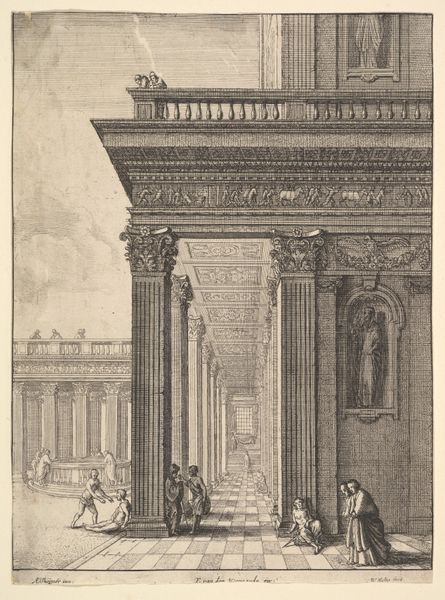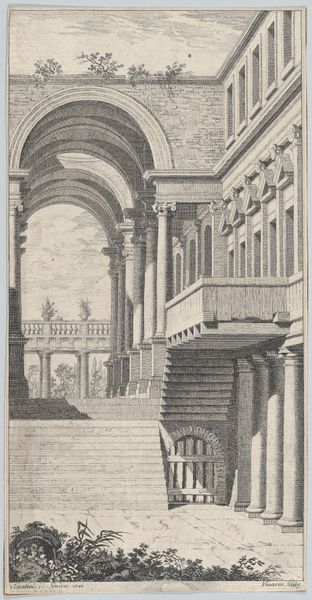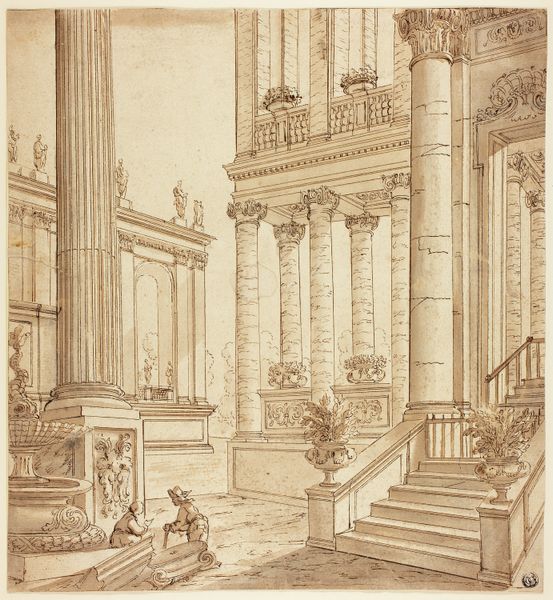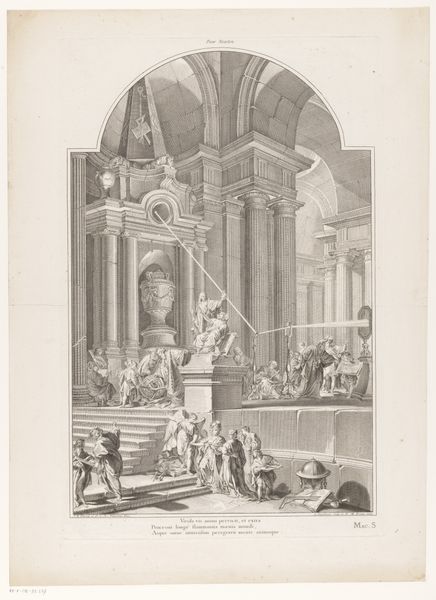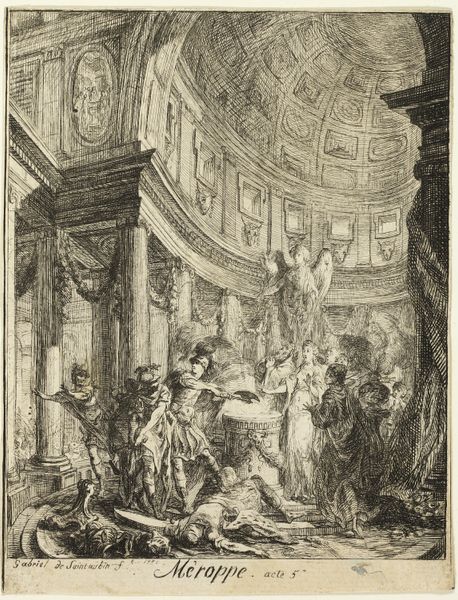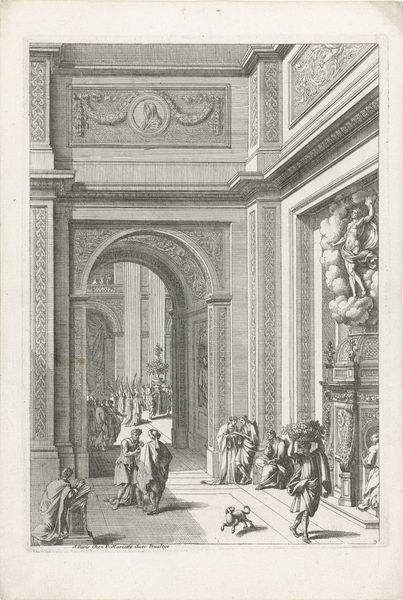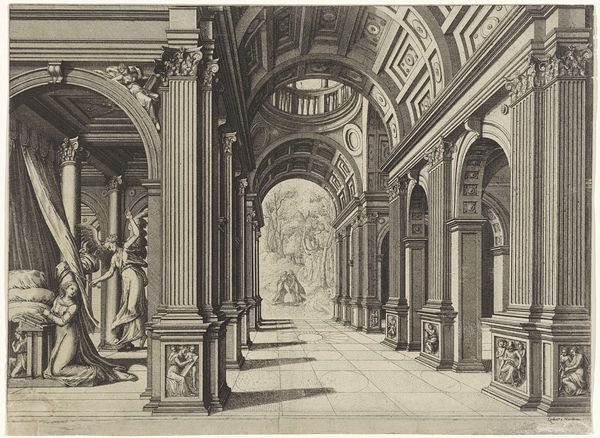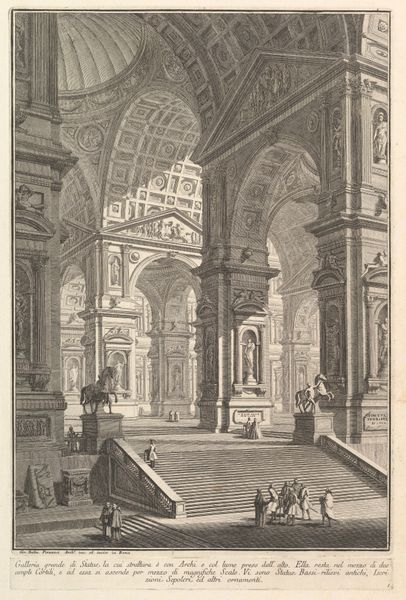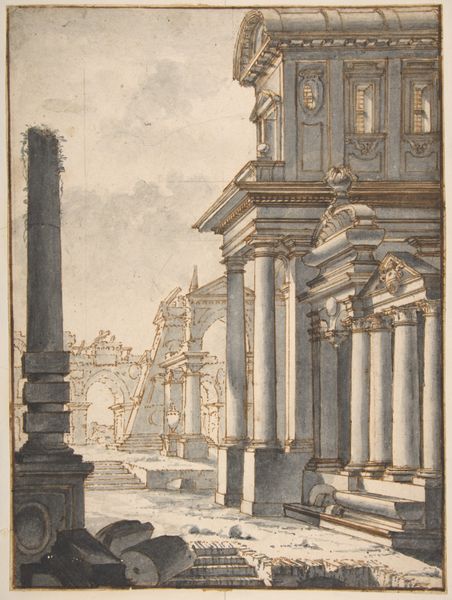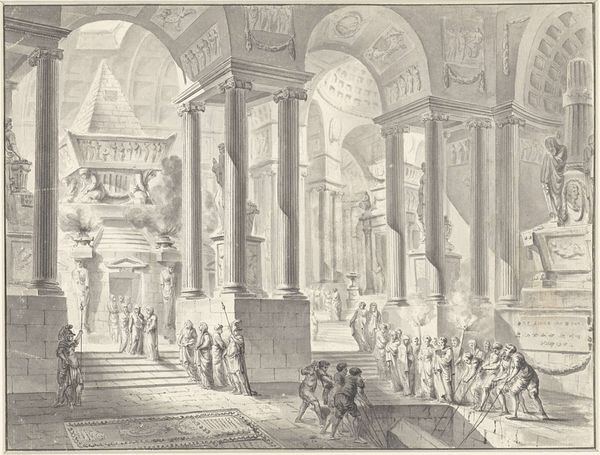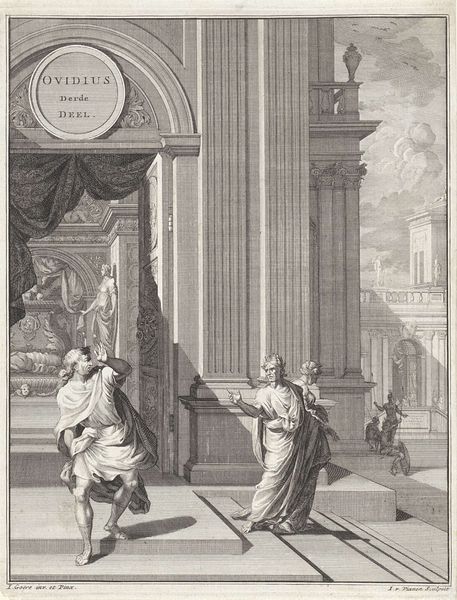
print, etching, paper, engraving, architecture
#
baroque
# print
#
etching
#
perspective
#
paper
#
cityscape
#
history-painting
#
engraving
#
architecture
Dimensions: plate: 40.6 x 25.8 cm (16 x 10 3/16 in.)
Copyright: National Gallery of Art: CC0 1.0
Editor: This etching, "Tempio Antico," was created by Giovanni Battista Piranesi around 1748-49. It’s stunning – almost overwhelming, really. All those lines and the sheer scale of the architecture... It’s grandiose but also kind of dreamlike. What do you see in this piece? Curator: I see echoes. Piranesi wasn't simply depicting architecture; he was conjuring the weight of Roman history and imperial power. Consider the temple itself: it’s a visual embodiment of Roman ambition and architectural innovation. Notice the figures; they're dwarfed by the scale, rendered anonymous, almost like ghosts amidst the ruins. Does this imagery tell us anything about how empires preserve their identity, and continue to exist through visual memory and association? Editor: I see what you mean, it is more than just documenting architecture. But what about the details he chose to include, the statues and smoking braziers for instance? Curator: Excellent question! These details are not arbitrary. The statues are visual quotes of past eras, acting like anchors in time, constantly reminding us of Rome's layered history. The braziers with their smoke add a sense of drama and ritual. The smoke itself can be interpreted as the transience of power. These things evoke cultural memory; but are they reliable records or powerful cultural symbols performing a function? Editor: So he is using the images of Roman grandeur, not necessarily to celebrate, but to… to hint at something more complex? Curator: Precisely. He is actively inviting us to contemplate our relationship to the past. And he is showing us the way that our cultural and visual heritage has symbolic undercurrents and consequences. How we relate to symbols defines much of what it means to be part of culture itself. Editor: That's fascinating. I’d only thought about it in terms of style and technique before, but now it's clicking into place for me! Thanks! Curator: My pleasure. It is the images, the iconography itself, that allow us to touch what is hidden from the naked eye.
Comments
No comments
Be the first to comment and join the conversation on the ultimate creative platform.

